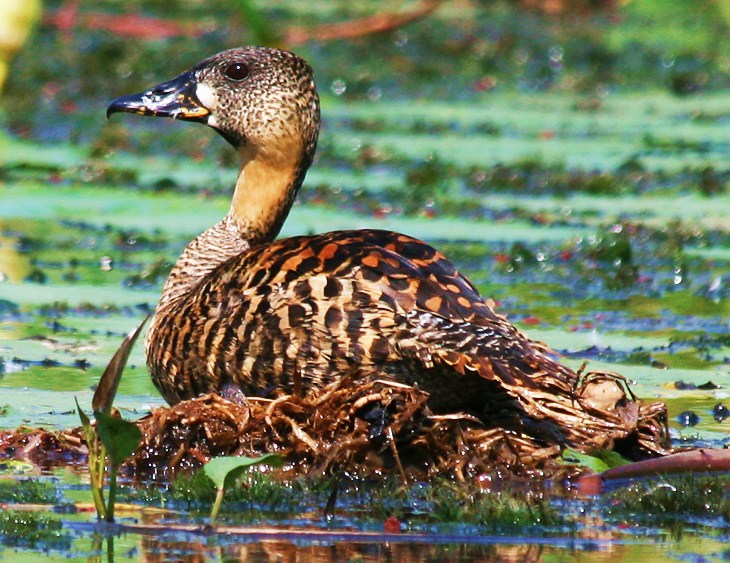Thalassornis leuconotus
 |
| Photo by Dave Appleton (Flickr) |
Common name:
white-backed duck (en); pato-de-dordo-branco (pt); dendrocygne à dos blanc (fr); ganso de nuca blanca (es); weißrücken-pfeifgans (de)
Taxonomy:
Order Anseriformes
Family Anatidae
Range:
This species is found throughout sub-Saharan Africa, only being absent from the equatorial rainforests and desert regions.
Size:
The white-backed duck is 43-45 cm long and weighs 625-800 g.
Habitat:
They favour natural or artificial water bodies that have clear water with emergent and floating plants. These include reed lakes, swamps and river marshes.
Diet:
The white-backed duck obtains food through diving for aquatic plant seeds from the muddy bottom and it does so in waters ranging in depth from 30-180 cm. Their diet includes the seeds of the blue water lily Nymphaea nouchali, of the small yellow water lily Nymphoides indica, of knotweed Persecaria limbata, of long-awned water grass Echinochloa stagnina, of swamp grass Paspalidium geminatum, of knuckle-bean Aeschynomene nodulosa and of Polygonum. Occasionally they also eat other parts of the plants and the larvae of Chironomidae.
Breeding:
These birds can breed all year round. Both sexes collaborate in building the nest in a dense stand of reeds or rushes or grasses or sedges growing in the water. The vegetation is bent over to form a vegetative base to the nest, with some of the bases of the bent over stems forming a wall round the nest, broken in one part by an access ramp leading to the water. There the female lays 4-9 light brown eggs which are incubated by both parents for 29-33 days. The ducklings are able to swim, dive and feed within 20 hours of hatching, but the adults accompany the brood until at least fully grown and are highly protective of them. They fledge about 2 months after hatching.
Conservation:
IUCN status – LC (Least Concern)
This species has an extremely large breeding range but the global population is estimated at just 12.000-28.000 individuals. The overall trend is decreasing, although some populations may be stable, and this decline is mostly related to modifications of wetlands, especially where the native aquatic flora is affected, namely through the introduction of herbivorous fish, the introduction of exotic plants, deterioration in water quality as a result of deforestation and soil erosion in catchment areas, and pollution. The species is also the target of hunting and egg collection in parts of its range. Still, overall the white-backed duck is not considered threatened at present.







